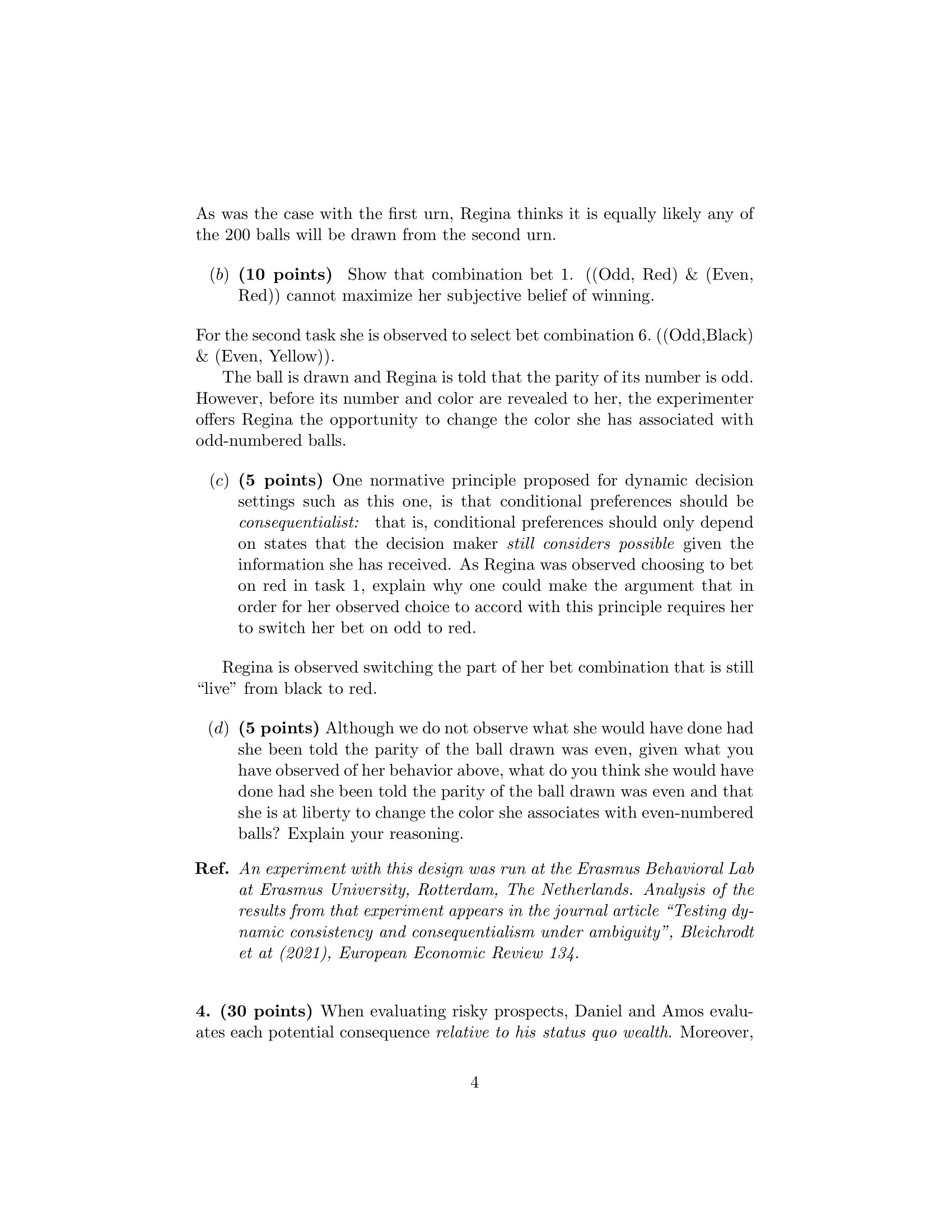Answered step by step
Verified Expert Solution
Question
1 Approved Answer
When evaluating risky prospects, Daniel and Amos evaluates each potential consequence relative to his status quo wealth. Moreover, 4 to each state sj they assigns
When evaluating risky prospects, Daniel and Amos evaluates each potential consequence relative to his status quo wealth. Moreover, 4 to each state sj they assigns the same (subjective) probability Pr (sj ) > 0, and to each gain or loss z ? R they assigns the same value v (z), given by the function


As was the case with the first urn, Regina thinks it is equally likely any of the 200 balls will be drawn from the second urn. (b) (10 points) Show that combination bet 1. ((Odd, Red) & (Even, Red)) cannot maximize her subjective belief of winning. For the second task she is observed to select bet combination 6. ((Odd, Black) & (Even, Yellow)). The ball is drawn and Regina is told that the parity of its number is odd. However, before its number and color are revealed to her, the experimenter offers Regina the opportunity to change the color she has associated with odd-numbered balls. (c) (5 points) One normative principle proposed for dynamic decision settings such as this one, is that conditional preferences should be consequentialist: that is, conditional preferences should only depend on states that the decision maker still considers possible given the information she has received. As Regina was observed choosing to bet on red in task 1, explain why one could make the argument that in order for her observed choice to accord with this principle requires her to switch her bet on odd to red. Regina is observed switching the part of her bet combination that is still "live" from black to red. (d) (5 points) Although we do not observe what she would have done had she been told the parity of the ball drawn was even, given what you have observed of her behavior above, what do you think she would have done had she been told the parity of the ball drawn was even and that she is at liberty to change the color she associates with even-numbered balls? Explain your reasoning. Ref. An experiment with this design was run at the Erasmus Behavioral Lab at Erasmus University, Rotterdam, The Netherlands. Analysis of the results from that experiment appears in the journal article "Testing dy- namic consistency and consequentialism under ambiguity", Bleichrodt et at (2021), European Economic Review 134. 4. (30 points) When evaluating risky prospects, Daniel and Amos evalu- ates each potential consequence relative to his status quo wealth. Moreover, 4
Step by Step Solution
There are 3 Steps involved in it
Step: 1

Get Instant Access to Expert-Tailored Solutions
See step-by-step solutions with expert insights and AI powered tools for academic success
Step: 2

Step: 3

Ace Your Homework with AI
Get the answers you need in no time with our AI-driven, step-by-step assistance
Get Started


